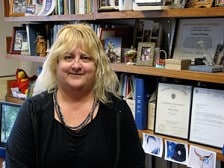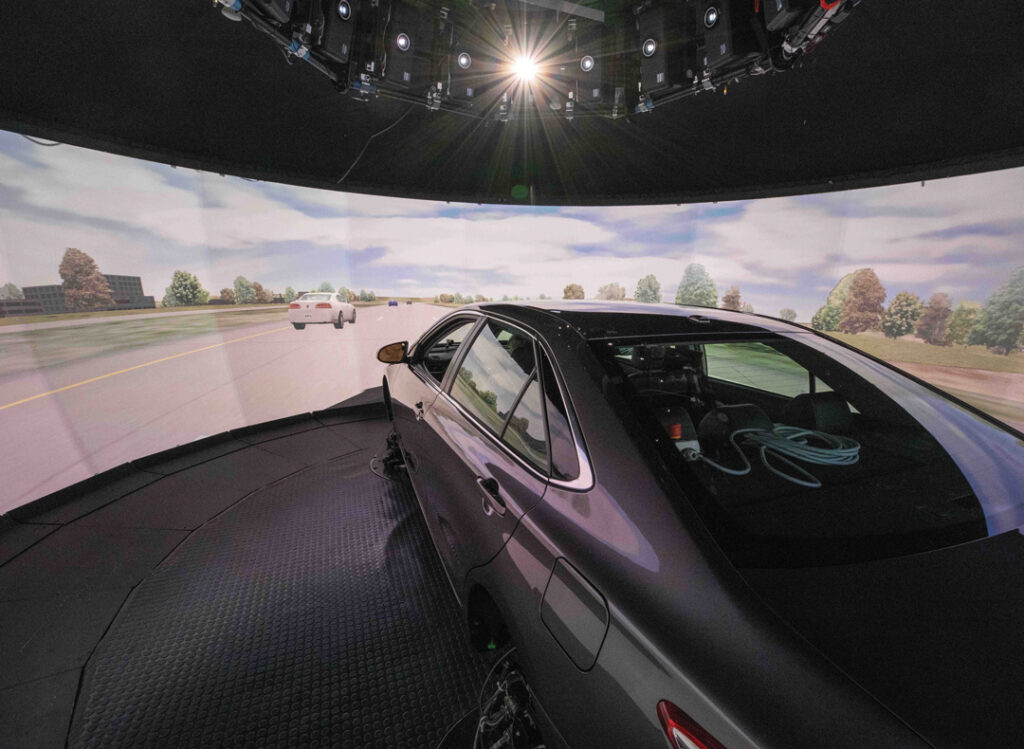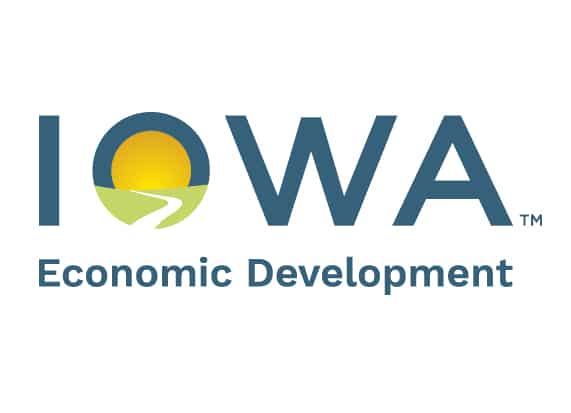Iowa State professor remains a supporter of nuclear energy

Public debate and bureaucracy are bogging down the development of nuclear energy and putting the United States at a disadvantage compared with other countries, an Iowa State University professor and nuclear energy expert says.
Carolyn Heising was practically raised at the knee of the development of the nuclear U.S. Navy. Her father was the construction manager for the USS Enterprise, the world’s first nuclear-powered aircraft carrier, which was commissioned in 1961.
Not surprising, then, that Heising has devoted most of her academic career to understanding and advocating the civilian use of nuclear energy.
“If we are really going to replace fossil fuels, the only alternative is nuclear,” she said. “You can’t build enough windmills or solar facilities or grow enough corn or switchgrass. You cannot replace 85 percent of our energy supply with biomass or solar or wind.”
That’s a tall statement to make in the breadbasket of the wind energy and biomass industries.
“I support wind and solar and biofuels, but they are not of a large enough scale to cover our energy needs,” Heising said.
The earthquake and tsunami that struck Japan on March 11 and disabled the Fukushima nuclear power plant have not changed her opinion that nuclear energy offers more benefits than risks.
In fact, nuclear safety is one of her specialties. She is an instructor in the nuclear engineering minor that has been resurrected for undergraduates in Iowa State’s College of Engineering, and she is among a handful of instructors in the Big 12 Conference’s Engineering Consortium, which provides online instruction for future nuclear engineers.
Heising’s sense of urgency about moving ahead with the licensing of nuclear power plants results from a conviction that climate change, generated by overheating the Earth’s atmosphere through the combustion of fossil fuels, poses a greater threat to the health of the planet and its population than does nuclear energy.
The main challenge to construction of nuclear power plants in recent years has been a lack of capital, she said.
But funding is just one of many reasons for delays in plant construction. Public concern about the susceptibility of nuclear power plants to terrorism loomed large in the years immediately following the attacks of Sept. 11, 2001.
There also is the fear of a nuclear plant meltdown and worries about the conversion of spent plutonium to weapons.
Heising said countries wanting nuclear weapons can more easily obtain them from countries that develop such weapons than through the conversion of commercial nuclear fuel.
She was an on-the-spot analyst during the partial core meltdown that occurred in 1979 at the Three Mile Island nuclear power plant near Harrisburg, Pa., and she has visited the site of the Chernobyl disaster in Russia.
Heising said the containment systems at Three Mile Island prevented widespread release of radioactive material. Such systems would have prevented the spread of radiation after an explosion and fire in 1986 at the Chernobyl power plant in Russia.
In 1999 and 2000, Heising took a leave of absence from Iowa State to work for the U.S. Department of Energy’s Office of Nuclear Energy, providing an analysis of the nuclear energy industry.
“We took a look at the future of new nuclear plants, and everywhere you went there was some optimism about it – there was less recognition of global warming at the time – there was some hope that we could revive the nuclear industry,” she said. “But I think what happened is that 9/11 happened.
“We have so much coal, and we have always had oil, and we have natural gas, and we have the Alaskan pipeline. … Other countries don’t have those options. That’s partly the reason why other countries have moved ahead of us, but I also think it’s partly just the history.”
Countries such as India and France and Russia have pressed ahead with the development of a nuclear industry as a practical and sustainable way to meet large-scale energy needs – and as a potential answer to global warming.
“When I’m in India, I don’t get the same questions as in the United States, like why aren’t we building solar,” Heising said. “They don’t see it that way. They just see it as this is what we are doing.”
At least some American youths are showing increased interest in nuclear energy.
Iowa State has about 50 students enrolled in its nuclear engineering minor, although the course Heising is teaching through the Big 12 consortium currently has no Iowa State students.
“Students do show interest,” Heising said. “We have people signing up in anticipation of the nuclear renaissance. It’s coming, but it’s a lot slower than those of us who are involved in the nuclear industry are hoping.”
In addition to a lack of financing, any development of a large-scale nuclear industry in the United States would be hampered by a work force that is no longer familiar with the construction skills necessary to build a reactor.
“We have an entire generation of workers who have never worked in the industry,” she said.
Still, the biggest challenge to developing a civilian nuclear power industry is a lack of will.
“I think the major issue is that we just have to be motivated to do it,” Heising said.











